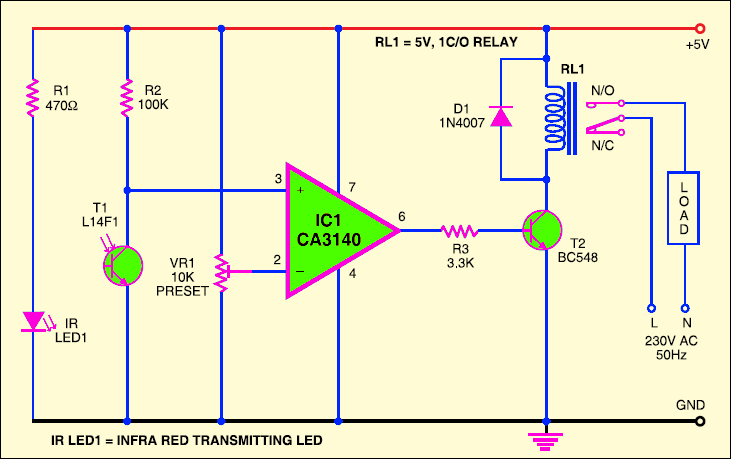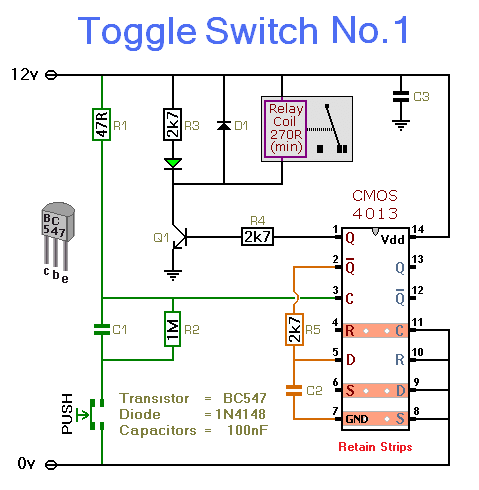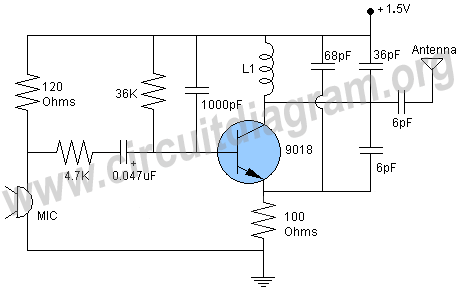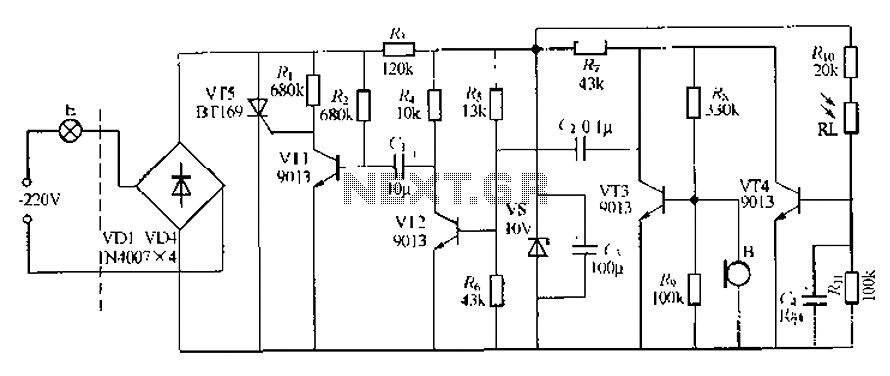
Wireless Switch

The circuit described here operates without physical contact to control the appliance. It requires the user to move their hand between the infrared LED (IR LED1) and the phototransistor (T1). The infrared rays emitted by IR LED1 are detected by the phototransistor, which activates the circuit. This circuit is notably stable and sensitive compared to other AC appliance control circuits. It is designed to be simple, compact, and cost-effective, with low current consumption in milliamperes. The circuit utilizes an operational amplifier IC CA3140, along with IR LED1, phototransistor T1, and various discrete components. When a regulated 5V power supply is connected, IR LED1 emits infrared rays that are detected by phototransistor T1 if properly aligned. The collector of T1 connects to the non-inverting pin 3 of IC1, while the inverting pin 2 is linked to a voltage-divider preset VR1. This preset allows for the adjustment of the reference voltage at pin 2, which in turn affects the sensitivity of the phototransistor. The operational amplifier IC1 amplifies the signal from the phototransistor. Resistor R3 regulates the base current of transistor BC548 (T2). The high output from IC1 at pin 6 drives transistor T2 to activate relay RL1, thereby switching on the appliance, such as a hand dryer, through the relay contacts. The operation of the circuit is straightforward: to switch on the appliance, the user interrupts the infrared rays reaching the phototransistor with their hand. While the infrared beam is interrupted, the appliance remains powered through the relay. When the hand is removed from the infrared beam, the appliance turns off via the relay. A +5V supply must be connected to the circuit.
This non-contact control circuit is particularly advantageous for applications requiring hygiene or convenience, such as automatic hand dryers in public restrooms. The use of an infrared LED and phototransistor creates an effective sensing mechanism that minimizes wear and tear from mechanical switches. The operational amplifier (CA3140) serves not only to amplify the weak signal received from the phototransistor but also to provide a buffer that isolates the input from the output, enhancing the overall stability of the circuit.
The use of a voltage divider with the adjustable preset (VR1) permits fine-tuning of the sensitivity, allowing the circuit to be adapted to different environmental conditions or user preferences. The transistor BC548 acts as a switch, controlling the relay based on the amplified signal from the operational amplifier, ensuring that the appliance operates reliably.
The relay (RL1) is critical in this design as it provides the necessary isolation between the low-power control circuit and the high-power appliance, thus safeguarding the components from high voltages. The entire circuit can be housed in a compact enclosure, making it suitable for various installations. Proper alignment of the IR LED and phototransistor is essential for optimal performance, and any obstacles or misalignment can result in false triggering or failure to activate the appliance. This circuit exemplifies a modern approach to appliance control, leveraging infrared technology for enhanced user experience and operational efficiency.The circuit described here requires no physical contact for operating the appliance. You just need to move your hand between the infrared LED (IR LED1) and the photo transistor (T1). The infrared rays transmitted by IR LED1 is detected by the photo transistor to activate the circuit. This circuit is very stable and sensitive compared to other AC appliance control circuits. It is simple, compact and cheap. Current consumption is low in milliamperes. The circuit is built around an IC CA3140, IR LED1, photo transistor and other discrete components. When regulated 5V is connected to the circuit, IR LED1 emits infrared rays, which are received by photo transistor T1 if it is properly aligned. The collector of T1 is connected to non-inverting pin 3 of IC1. Inverting pin 2 of IC1 is connected to voltage-divider preset VR1. Using preset VR1 you can vary the reference voltage at pin 2, which also affects sensitivity of the photo transistor.
Op-amp IC1 amplifies the signal received from the photo transistor. Resistor R3 controls the base current of transistor BC548 (T2). The high output of IC1 at pin 6 drives transistor T2 to energise relay RL1 and switch on the appliance, say, hand dryer, through the relay contacts. The working of the circuit is simple. In order to switch on the appliance, you simply interrupt the infrared rays falling on the photo transistor through your hand.
During the interruption, the appliance remains on through the relay. When you remove your hand from the infrared beam, the appliance turns off through the relay. connect +5V supply to the circuit. 🔗 External reference
This non-contact control circuit is particularly advantageous for applications requiring hygiene or convenience, such as automatic hand dryers in public restrooms. The use of an infrared LED and phototransistor creates an effective sensing mechanism that minimizes wear and tear from mechanical switches. The operational amplifier (CA3140) serves not only to amplify the weak signal received from the phototransistor but also to provide a buffer that isolates the input from the output, enhancing the overall stability of the circuit.
The use of a voltage divider with the adjustable preset (VR1) permits fine-tuning of the sensitivity, allowing the circuit to be adapted to different environmental conditions or user preferences. The transistor BC548 acts as a switch, controlling the relay based on the amplified signal from the operational amplifier, ensuring that the appliance operates reliably.
The relay (RL1) is critical in this design as it provides the necessary isolation between the low-power control circuit and the high-power appliance, thus safeguarding the components from high voltages. The entire circuit can be housed in a compact enclosure, making it suitable for various installations. Proper alignment of the IR LED and phototransistor is essential for optimal performance, and any obstacles or misalignment can result in false triggering or failure to activate the appliance. This circuit exemplifies a modern approach to appliance control, leveraging infrared technology for enhanced user experience and operational efficiency.The circuit described here requires no physical contact for operating the appliance. You just need to move your hand between the infrared LED (IR LED1) and the photo transistor (T1). The infrared rays transmitted by IR LED1 is detected by the photo transistor to activate the circuit. This circuit is very stable and sensitive compared to other AC appliance control circuits. It is simple, compact and cheap. Current consumption is low in milliamperes. The circuit is built around an IC CA3140, IR LED1, photo transistor and other discrete components. When regulated 5V is connected to the circuit, IR LED1 emits infrared rays, which are received by photo transistor T1 if it is properly aligned. The collector of T1 is connected to non-inverting pin 3 of IC1. Inverting pin 2 of IC1 is connected to voltage-divider preset VR1. Using preset VR1 you can vary the reference voltage at pin 2, which also affects sensitivity of the photo transistor.
Op-amp IC1 amplifies the signal received from the photo transistor. Resistor R3 controls the base current of transistor BC548 (T2). The high output of IC1 at pin 6 drives transistor T2 to energise relay RL1 and switch on the appliance, say, hand dryer, through the relay contacts. The working of the circuit is simple. In order to switch on the appliance, you simply interrupt the infrared rays falling on the photo transistor through your hand.
During the interruption, the appliance remains on through the relay. When you remove your hand from the infrared beam, the appliance turns off through the relay. connect +5V supply to the circuit. 🔗 External reference





